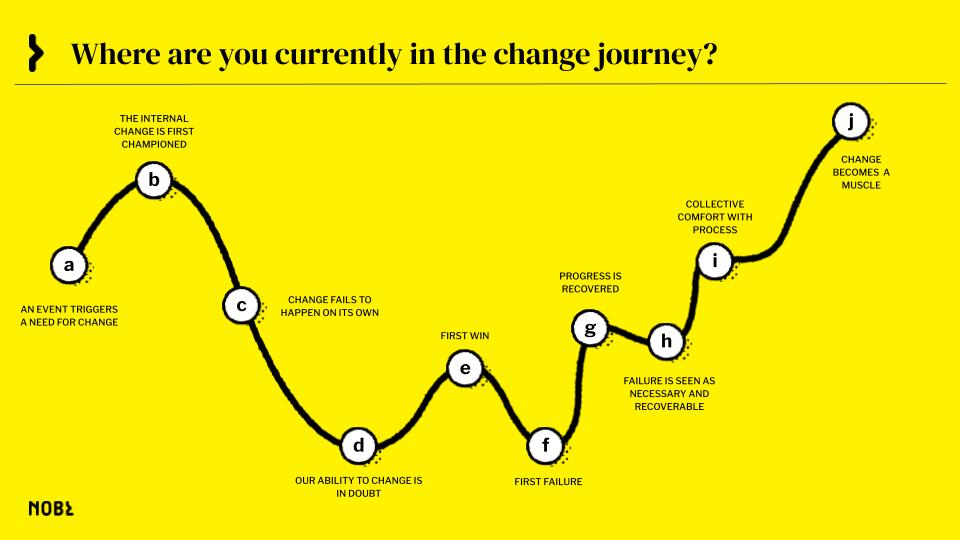“The course of true change never did run smooth.”
William Shakespeare, probably
When it comes to implementing change, leaders are typically raring to go. Not only are they high performers with high expectations for their teams, they’re intensely aware of the need for urgency. Rapidly changing markets, ruthless competition, demanding boards: they feel the pressure to make change every day, even if they know that, rationally, it takes time—three years on average—to reinvent an organization.
So when we first start on the change journey, the promise of a better future is invigorating. It’s easy enough to imagine a clear strategy that allows teams to effectively prioritize projects; a culture that allows for clearly defined roles and a spirit of collaboration; a workplace where flexible hours and remote policies are the norm.
But then you start implementing changes, and reality sets in. The daily demands of your business prevent you from focusing on necessary, but not “urgent,” changes. You encounter resistance from team members who disagree with your ideas, or even have a vested interest in things remaining the same. At your lowest point, you may even doubt that change is possible, and consider abandoning the project.
That’s why we’ve developed a simple diagram for leaders to reflect on, mapping out key moments in the change journey.

We’ll ask simple questions, like, “Where are you on this journey?” and “How was the week—up or down?” Giving leaders time to evaluate and identify where they are accomplishes two things:
- It provides perspective. How you feel today is just that—a reflection of today, not necessarily of the whole process. If you’re feeling frustrated by the lack of change, you may be just a short period away from your first big win. And if you’re feeling like everything’s running smoothly? Well, watch out for a bump in the road!
- It guides planning. By sharing this diagram at the beginning and referring to it throughout the process, we can conduct pre-mortems and anticipate (and counteract) resistance to change. As a result, the lows are mitigated, and we already have ideas to get back on track.
Of course, this journey comes with a proviso: you have to have some sort of map to begin with. (We certainly wouldn’t recommend launching a dozen initiatives and then hoping for the best!) Learn more about the four phases of Change Making.














